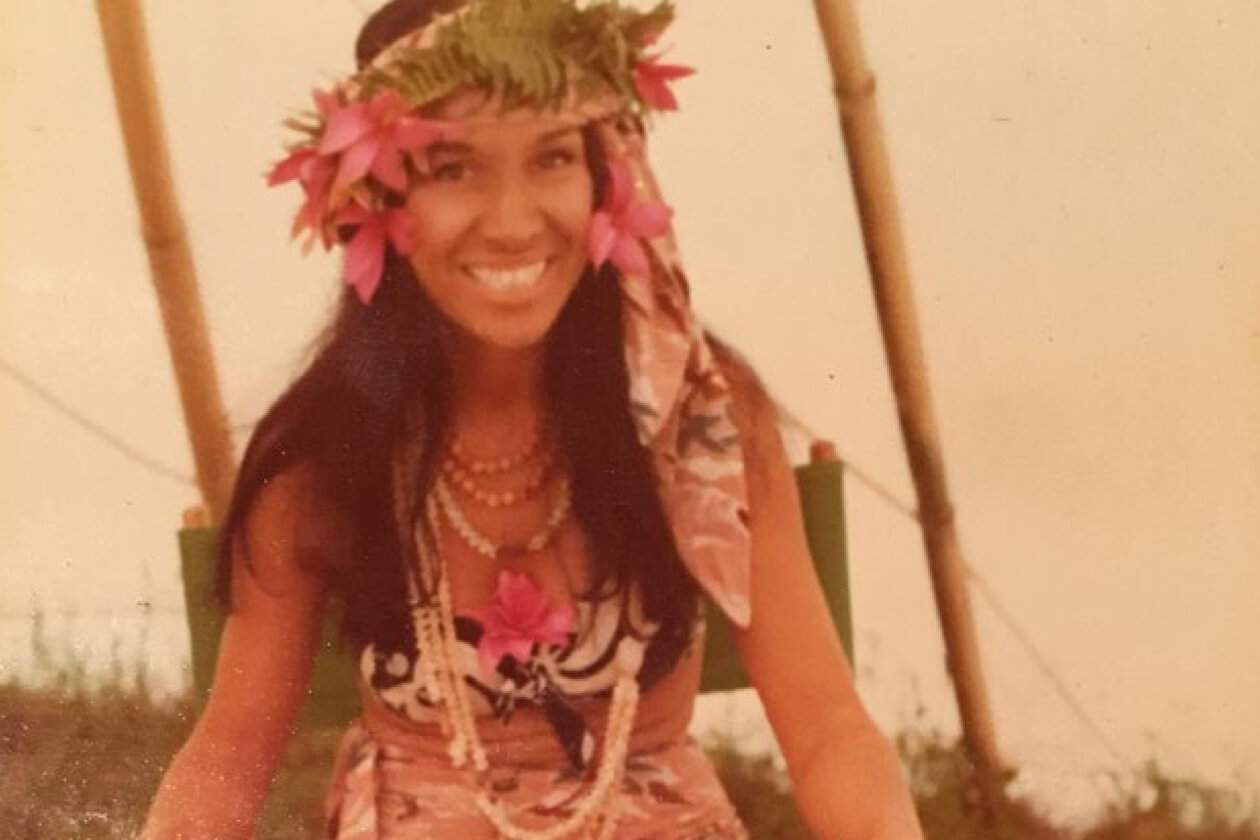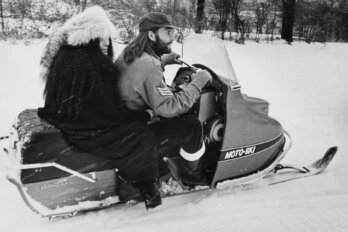In 1975, Sesame Street had only been on the air six years, but already, it had revolutionized children’s television and was considered a cultural institution. From the beginning, it was a hit. “’Sesame Street’ Dazzles in Television Premiere” read a headline in Variety. The show was aimed at preschoolers and had specific goals about reflecting accurate and nonjudgmental depictions of the lives of inner-city kids; it was set in a brownstone tenement, and the cast included strong African American characters Gordon and Susan (who were the cornerstone of the street) and Hispanic characters Maria and Luis (added in 1972). White characters were deliberately in the minority. They also cast everyday kids, not child actors, to play the children of Sesame Street. According to author Michael Davis’s 2008 book, Street Gang: The Complete History of Sesame Street, at the end of its first year, Sesame Street was in the homes of 1.9 million Americans, and a decade later, more than 9 million American kids under the age of six watched it daily.
Buffy Sainte-Marie didn’t expect the phone call from Sesame Street’s producers asking her to be a typical one-shot guest on the show, and in fact, she almost said no. She was busy with other ventures, and she didn’t really want to go all the way to New York just to count to ten like everyone else who made a guest appearance. But before she hung up she asked a question. “I said, have you ever done any Native American programming?” she recalls. They hadn’t, but they called her back with a new offer to include her as a writer and contributor and appear as a semiregular cast member. She knew it would be a good opportunity to reach millions of young children and their parents with the same message she had been bringing to her concert audiences for years: “Indians exist.”
Among Sainte-Marie’s first Sesame Street appearances was a location shoot in Taos, New Mexico, for a full week of shows. Producers even temporarily changed the theme song to begin with, “Sunny day, coming to Santa Fe,” and end with, “We’re a long, long, long, long, long, long way from Sesame Street.” In one of the episodes, Sainte-Marie takes Big Bird and his human friend Maria to visit Taos Pueblo, an Indigenous community in New Mexico. Sainte-Marie’s performance is quite natural, and her rapport with future lifelong friend Sonia Manzano, who played Maria, was immediate. Through a handful of scenes, Sainte-Marie manages to convey some vital information about Indigenous people, including that, while she’s Cree from Canada, there are hundreds of different tribes and nations with their own languages and customs and culture and that she’s a guest there too. She also sings a few songs and plays the mouth bow, and they find out about the children’s way of life in the pueblo.
Accurate representations of Indigenous life in pop culture were painfully rare in 1975. “It’s very hard to create a presence when all of the seats are already filled by the same old people who’ve been doing it the same way forever,” Sainte-Marie says. So it was additionally important to her to make the most of this opportunity. “The fact that Indians exist—that was really important to get through to little kids and their caregivers. It’s important to get that message through before any kind of stereotyping makes a presence in their lives. So that when somebody says, ‘Indians are no good,’ little kids can say, ‘Oh, no, Big Bird says Indians are okay.’”
When she was growing up, Sainte-Marie had very few visible touchstones or pop-culture role models of people who looked like her. The landscape presented a largely white, homogenous North America, but she hoped to change that through Sesame Street and through songs like “Generation,” a thundering, bluesy track recorded for her 1974 album, Buffy, which addressed inequality and was also anchored in real-life happy memories.
In the chorus, Sainte-Marie sings, “Me, I don’t want to go to the moon/I want to leave that moon alone,” a line she took from a conversation with her Cree father, Emile Piapot, while they were walking around in Regina one day. In another line, Sainte-Marie sings, “The media is saturated but the sweetgrass still grows tall.” This references a conversation she had with her friend, the broadcaster, activist, and artist John Trudell. “He was talking about the fact that the media is saturated, which means column space is already prescribed, and they have a reserved sign on almost every seat,” Sainte-Marie says. “If you’re seen as an American Indian or First Nations Canadian or an Aboriginal Australian or an Indigenous Sami person from Sweden, Norway, Russia, or Finland, even if you have a brilliant idea, nobody’s going to notice, because they’re still thinking about you in terms of the 1800s and some costume from a movie. Yet that doesn’t mean that our traditions don’t still exist. We do have things going for us that nobody points out or that people have tried very hard and systematically to strip away. All of these songs are written with that in mind. I feel that I’ve had great advantages in knowing two cultures. I do understand that the media is saturated and that the sweetgrass still grows tall.”
Sainte-Marie’s first Sesame Street appearances were so successful that she became a recurring cast member. She balanced her ongoing commitment to the show with her activism, her new relationship, and a tour to Australia. In 1975, she was looking for a new road manager when she met her future best friend, Kayle Higinbotham.
Sainte-Marie recalls that, on tour, “Kayle thought maybe I had a sweetheart or that she was just being left out, because she’d come by my hotel room and there’d be two dinner trays. Only, that was all me! I was real hungry, and I’d call room service and say, ‘Yeah, I’ll have the roast chicken, and what’ll you have?’ I’d cover the receiver and then say, ‘Oh, the spaghetti too, right?’ to an imaginary roommate. Well, anyway, when I got back from that tour, I found out I was pregnant! That’s why I was eating so much!”
Sainte-Marie hadn’t harboured any long-held dreams of being a parent and was surprised when she found out she was pregnant. “Very much surprised! And very happy.” She and Sheldon Peters married and welcomed Dakota Starblanket Wolfchild, or Cody, to the world in 1976.
Sainte-Marie loved reading to baby Cody, making up songs to narrate their time together, communicating with him constantly. When Sweet America, her 1976 album, failed to garner much attention, she matter-of-factly assumed that the day she’d always known was coming had arrived: her guest appearance in show business was over—though, by then, it had lasted twelve albums longer than she thought it would—and it was time to move on. She’d concentrate on raising Cody, do a few concerts a year, and keep writing songs, just not explicitly for the purpose of putting out a record. She’d also keep working part-time on Sesame Street, folding her little family into the mix as well.

“When I became pregnant during my first year on Sesame Street, I thought they’d probably let me go,” Sainte-Marie recalls. “But they didn’t. They really got into it.” Producers invited Wolfchild to join Sainte-Marie on the show sometimes, and after Cody was born, he was also a frequent guest. A baby introduced a lot of new, exciting dynamics into Sesame Street, as did the family’s Indigeneity and Sainte-Marie’s adoptive cultural practices related to her home in Hawai‘i. “When Cody was either one or two, we had a baby luau for him, and that’s a traditional thing in Hawai‘i,” Sainte-Marie says. “I married into a Hawai‘ian family in my first marriage, so I was real comfortable with Hawai‘ian people anyway, even after Dewain and I parted. Sesame Street wrote up the scenario for Big Bird as, ‘You’re going to Hawai‘i for Cody’s baby luau, and you’re going to visit Buffy and Sheldon.’”
Sainte-Marie had long had a teepee set up in the backyard of her Hawai‘i home in what later became her goat pasture. Hundreds of people showed up for the luau, including locals and the Sesame Street cast and crew who’d come over for a few weeks of taping. Oscar the Grouch found a temporary new home inside an old truck that she hadn’t had towed yet from her yard.
“With our local people and the Sesame Street scouts, they found a mountain that kind of looked like Snuffleupagus, who was Big Bird’s imaginary friend,” Sainte-Marie recalls.
Sainte-Marie’s character was, initially, the only adult who could see Snuffleupagus, which was part of her bond with Big Bird, who was for a while hugely jealous of baby Cody.
“Their thing on sibling rivalry was just brilliant,” Sainte- Marie says. “Unfortunately, most grown-ups fail to prepare kids for what having a new baby will be like for them. You know, the grown-ups are all saying to the kids, ‘Oh, you’re going to have a little brother or sister! Won’t that be wonderful?’ And it’s not wonderful [for kids]—it’s awful. Sesame Street set it all up so that Big Bird turned out to be quite disappointed. And that had nothing to do with ethnic things either, so I’ve got to hand it to them, they never tried to stereotype me. They just had it right every time. We did specifically Indian things, but we also did everybody things.”
Sainte-Marie would sometimes sing the little songs she wrote for Cody on the show, like his bath-time song that went, “Wash your little feet now, yep, yep, scrub your little feet now.” And, in 1977, Sainte-Marie became the first woman to nurse a baby on mainstream national television. She’d suggested this to producers, in hopes of helping to normalize nursing, and they loved the idea. The brief scene, which lasts less than a minute, is incredibly simple and effective. Big Bird asks Sainte-Marie what she’s doing, and she says, “I’m feeding the baby, see? He’s drinking milk from my breast.” Big Bird replies, “That’s a funny way to feed a baby,” and Sainte-Marie calmly, sweetly explains, “Lots of mothers feed their babies this way. Not all mothers, but lots of mothers do.”
“I didn’t know it would ever become a big deal,” she says. “And I really didn’t care. But I did know how hard it was for mothers like me to get information and encouragement about breastfeeding even from their doctors, and I just wanted to be a part of fixing that. Now people will get a chip on their shoulder on one side or the other, but then it was no big deal.” It’s also not a big deal to Big Bird. He’s curious and asks a question, and Sainte-Marie respects his curiosity and answers his question, and then he goes back to playing, just like real little kids.
When she was shooting the show, Sainte-Marie, Wolfchild, and Cody would spend a few weeks or a month in New York, usually in a hotel close to Lincoln Center and Central Park. A typical day started when she arrived early at the Reeves Studio at 81st and Broadway and headed upstairs to her tiny dressing room. The wardrobe woman would show up with the day’s outfit, or Sainte-Marie brought her own clothes. They often shot two shows a day, which for Sainte-Marie meant memorizing two scripts with a baby on her hip. It was exhausting. And, rightfully so, the adults really came third in the list of Sesame Street’s priorities, right behind the Muppets and the children.
Sonia Manzano offered her some very specific advice when Sainte-Marie joined the show. “She told me to be prepared to look ugly because the lighting was all for the Muppets,” she says. “She said, ‘Actually, we have a pretty good-looking cast, but we all look ugly because of the lights,’ and boy, was she ever right. You had to kind of leave your ego in the dressing room. If the Muppets messed up, you had to do it over again. But if you messed up, you might not get a second chance, because filming Big Bird and the other Muppets was so crucial. The live cast, we were all second bananas. But very happy bananas,” Sainte-Marie laughs.
While the adults rehearsed the scenes, the kids who appeared on Sesame Street would play in a different part of the theatre, a big, decked-out playroom packed with things to do and people to watch them. When the cameras and actors and puppeteers were ready, the kids would step into the scene.
Sainte-Marie also remembers being impressed with the sheer size of Big Bird. Caroll Spinney, who has played Big Bird since 1969 (and who is still officially credited with the role, though Matt Vogel is usually the one in the costume now; Spinney pre-records Big Bird’s dialogue), is tall anyway, but Big Bird’s costume stands eight-foot-two. Sainte-Marie sighs. “Most parents are so stupid, they just don’t even think of what that’s like for a little child. Parents used to stop me in airports with a toddler in their arms, ‘Look who it is! It’s Buffy from Sesame Street!’ and they’re pushing this poor little kid into my face, and the kid is not putting two and two together because for a child watching on television, I’m eight inches tall and Big Bird is twelve inches tall.”
Sainte-Marie has a soft spot for both of Spinney’s characters, Big Bird and Oscar the Grouch.
“He said they were two sides of his personality,” she laughs. She also had a special affection for Frank Oz’s blue monster character, Grover. “I always liked Grover—he’s shy, retiring, doesn’t have any confidence. I did one scene I’ll never forget with him about self-esteem. The Sesame Street photographer took a beautiful picture, and I turned it into a poster that we used to use for the Cradleboard Teaching Project about self-esteem,” she remembers. “I had to say, ‘Everybody needs self-esteem. You too, Grover.’ Like, it’s okay to feel good about yourself and to be happy. A lot of people don’t learn that it’s okay to be happy. As in, ‘If you’re happy, you’re being selfish!’ We need to break that old-fashioned cycle of negativity. It’s obsolete and destructive.”
Sainte-Marie also taught the Count how to count in Cree, and Wolfchild taught him how to count in Dakota. “Most Americans don’t realize that American Indians have language and have numbers. ‘Pre-Columbian’—they think cavemen,” she says. “They don’t think about astronomy and cranial surgery and mathematics and families and agriculture and things like that. I tried to give them what they could not have found on their own. I was trying to fill in that blank that they could not themselves bring into the lives of children—simple stuff, like our existence. We’re considered the vanishing Americans, like we’re a myth, a Halloween costume, instead of a reality. Sesame Street provided just the loveliest way to do the same thing that I had been doing through songwriting: bring things to light that people might not be able to find on their own.”
Sainte-Marie only met the now deceased Muppets creator Jim Henson once. “He was really nice, but I never got to spend any real time with him,” Sainte-Marie remembers. “[I met him] at the Golden Globes [a few years after she appeared on Sesame Street] when I was nominated for ‘Up Where We Belong,’ and Jim was wearing a green suit (of course). I wish I could have known him. I think he was a very important artist. Also Kermit Love [his real name, but not Kermit the Frog’s namesake, it was just a wild coincidence], who actually created the Big Bird costume, helped develop the character and took care of the costume and all that. It’s hard to tell who Big Bird is—is it Kermit or is it Caroll? One person’s inside it, and the other is taking care of the outer Big Bird. Kermit was very close with Jim, and they did a lot together, building the Muppets.”
Sainte-Marie’s stint on the show came to an end in 1981 when the Reagan administration made budget cuts that hit PBS and put an end to travel and rural filming, but the impact of the experience continued to help shape the direction of her life. “Sesame Street really was on the side of children,” she says. “No BS about it—they really meant it. I can’t think of any group in show business for whom I have more respect.”
Excerpted with permission from Buffy Sainte-Marie: The Authorized Biography by Andrea Warner, foreword by Joni Mitchell. Available from Greystone Books.




